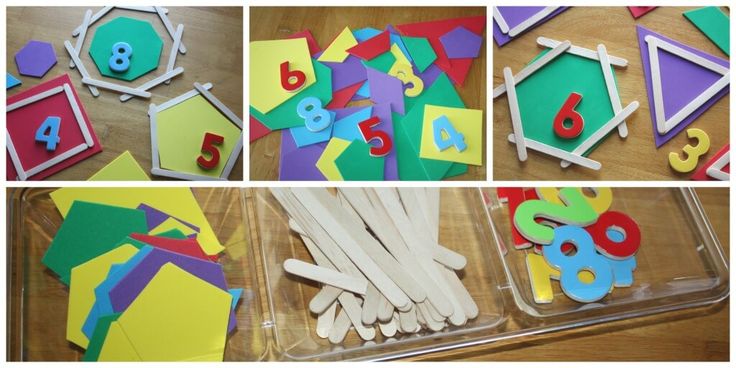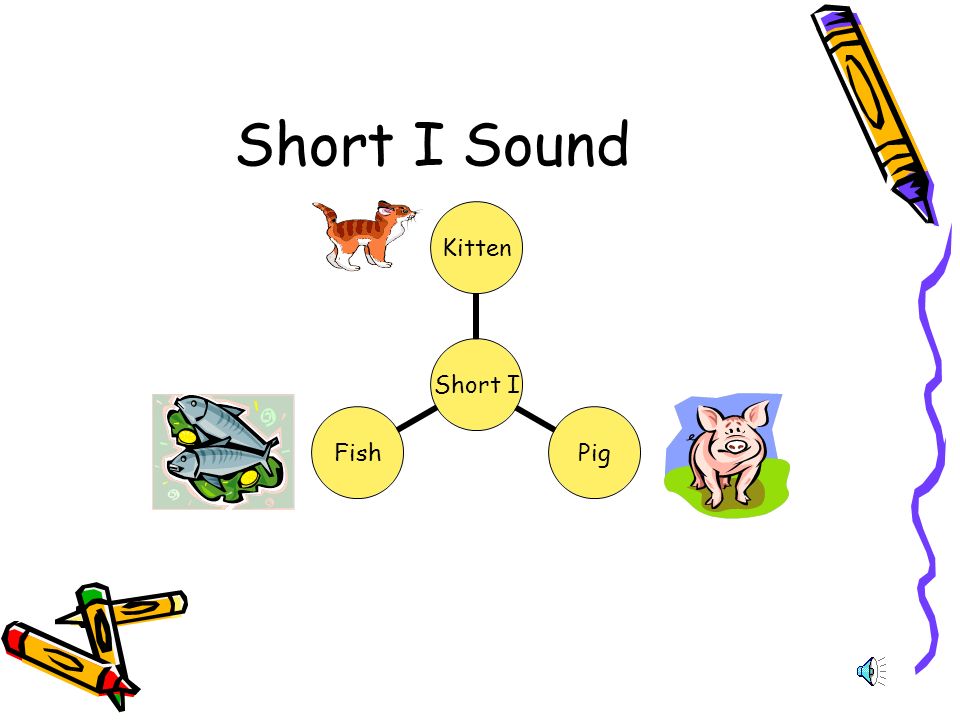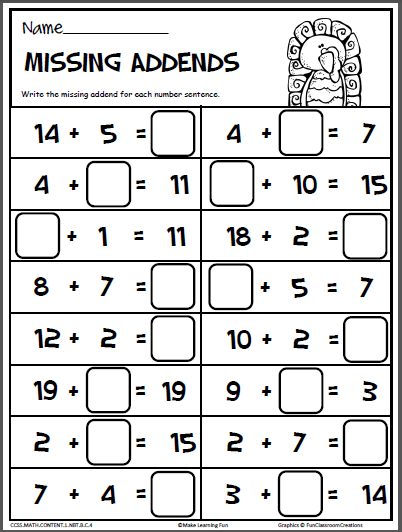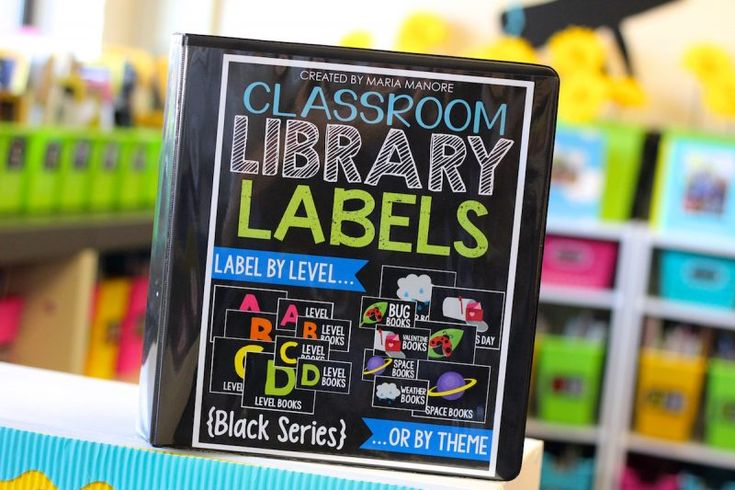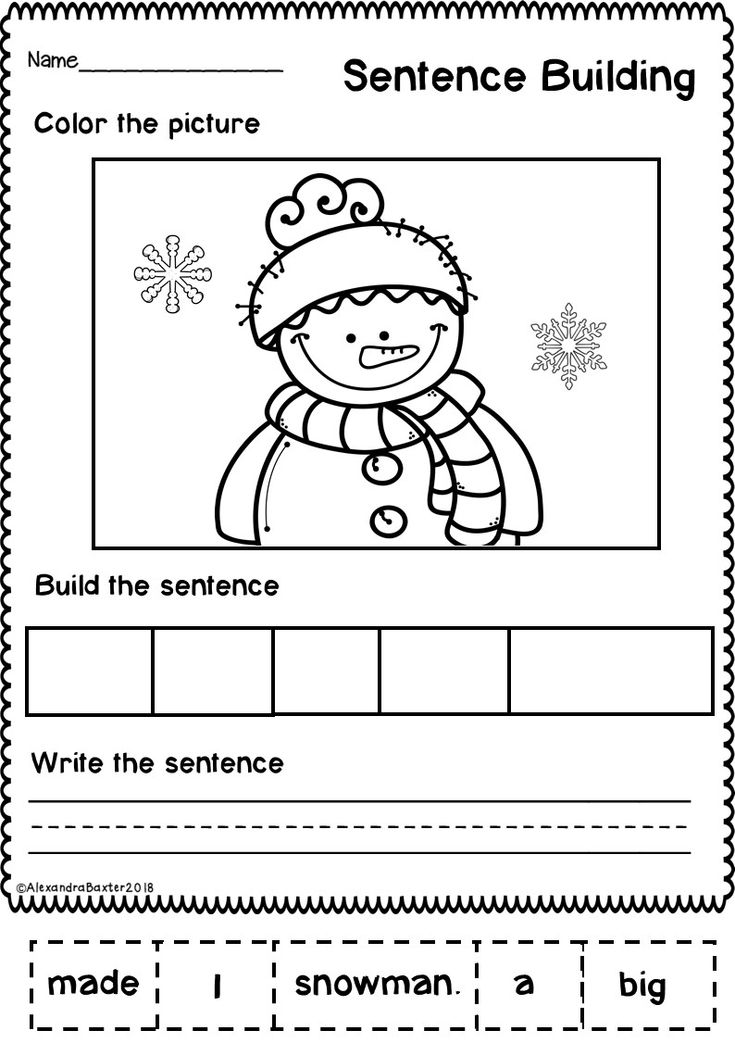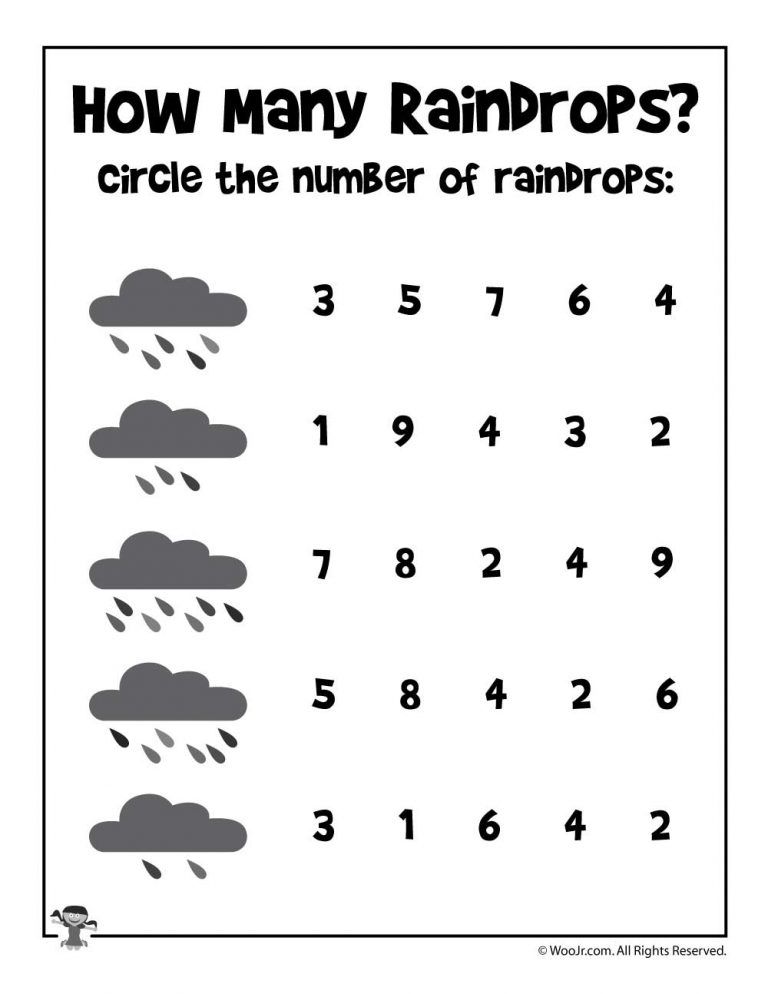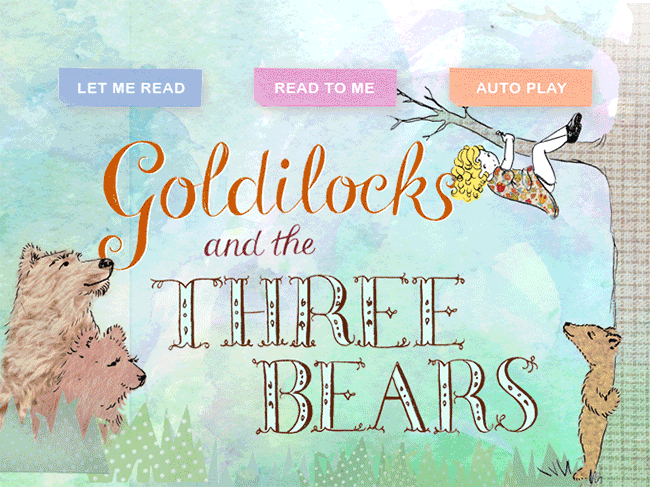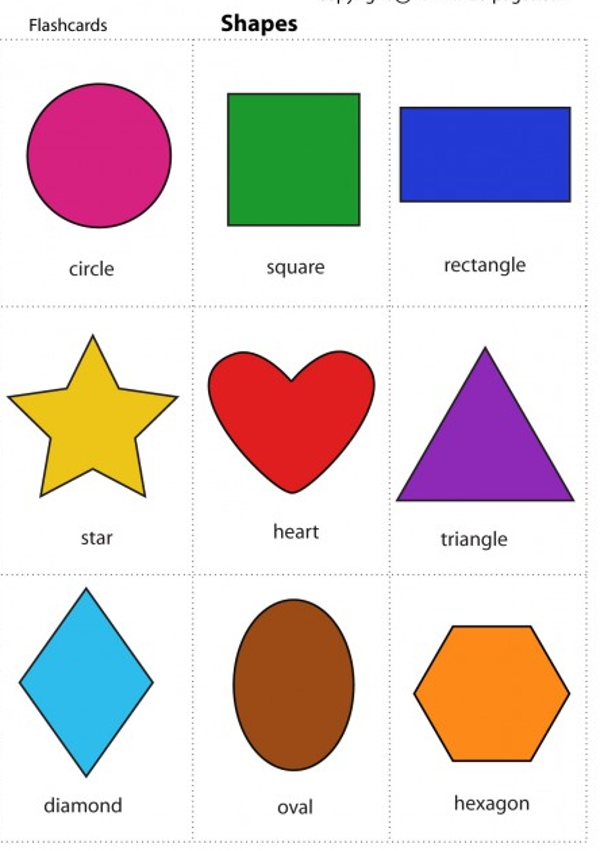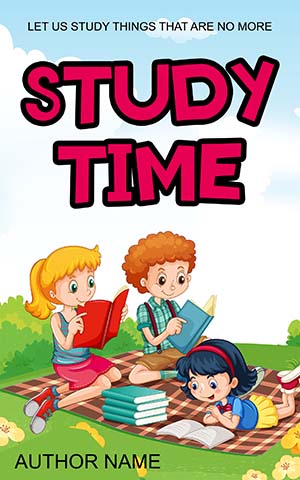Primary colors for preschoolers
How To Help Your Young Child Learn Colors
What are some fun ways to teach colors for kids? If this is a question you’ve been asking yourself, you’ve come to the right place.
As a toddler or preschooler, your child has definitely noticed all the different hues in the world around them, but now it’s time to help them make sense of it all.
Fortunately, teaching your child colors doesn’t have to be an overwhelming task. As you will see below, this can be a fun and engaging learning experience for both you and your child.
With a bit of planning and creativity, your young learner will soon know all the colors of the rainbow and so much more!
Table of Contents
- Why Is Learning Colors For Kids Important?
- Tips To Keep In Mind
- 10 Simple Activities To Teach Colors For Kids
- Make Every Day A Colorful Day
Why Is Learning Colors For Kids Important?
Our world is made up of different shapes and colors. Cars, houses, flowers, trees, buses, fruits, tall city buildings…everything has its own unique visual characteristics.
Before they were even a year old, your child noticed these things, too, but of course, none of it made sense. Now that they are older, it’s time to start piecing together all the information from their environment.
Teaching your child colors will help them make sense of the world around them. But did you know that understanding colors can also impact language skills and overall learning?
It’s true! As your child begins to understand that words represent objects, they’ll also realize that some words can describe certain features of those objects.
For example, blue can describe the sky, a blueberry, and a blue crayon. As your child starts to use color words to describe the things around them, they are also building their vocabulary and becoming better communicators.
But language isn’t the only academic skill built through lessons on colors for kids. Perhaps the most surprising of all is how learning colors can help introduce children to basic math skills. How?
Remember that every time you introduce your young learner to a new color, their brain actively works to process the information.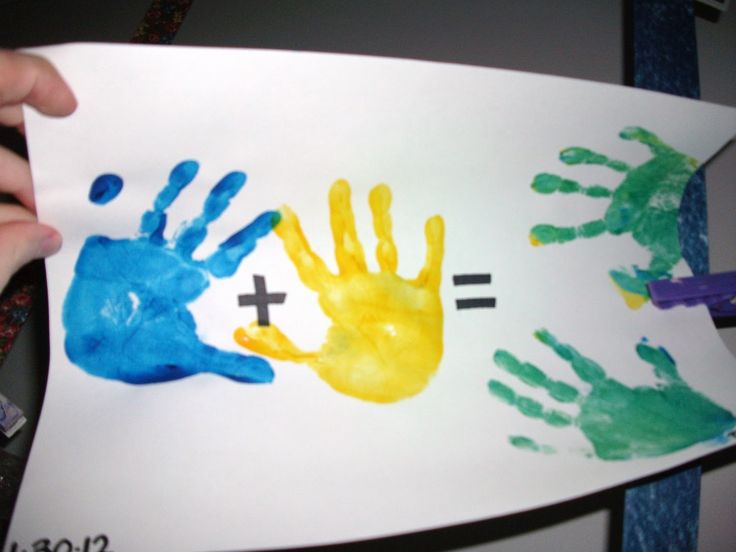 A lot of organizing, categorizing, and comparison takes place when sorting different colors and shapes.
A lot of organizing, categorizing, and comparison takes place when sorting different colors and shapes.
Examining something and identifying attributes, such as color, is an essential skill for math. So, in the future, when they’re trying to tell if a shape is an octagon or a hexagon, they’ll use the same visual discrimination skills they learned when learning colors.
(Note: If your child seems to have trouble distinguishing colors, they may be color blind. Contrary to popular belief, that doesn’t necessarily mean they don’t see colors at all, but it can make school more difficult for them down the road [i.e., reading off a chalkboard].
If you suspect your child may be color blind, ask your child’s pediatrician or eye doctor about getting them tested.)
Now that you’re clear on all the incredible benefits of teaching colors for kids, you probably want to start helping your child master them!
Before we get started on that, here are some basic tips to keep in mind when practicing colors with your child.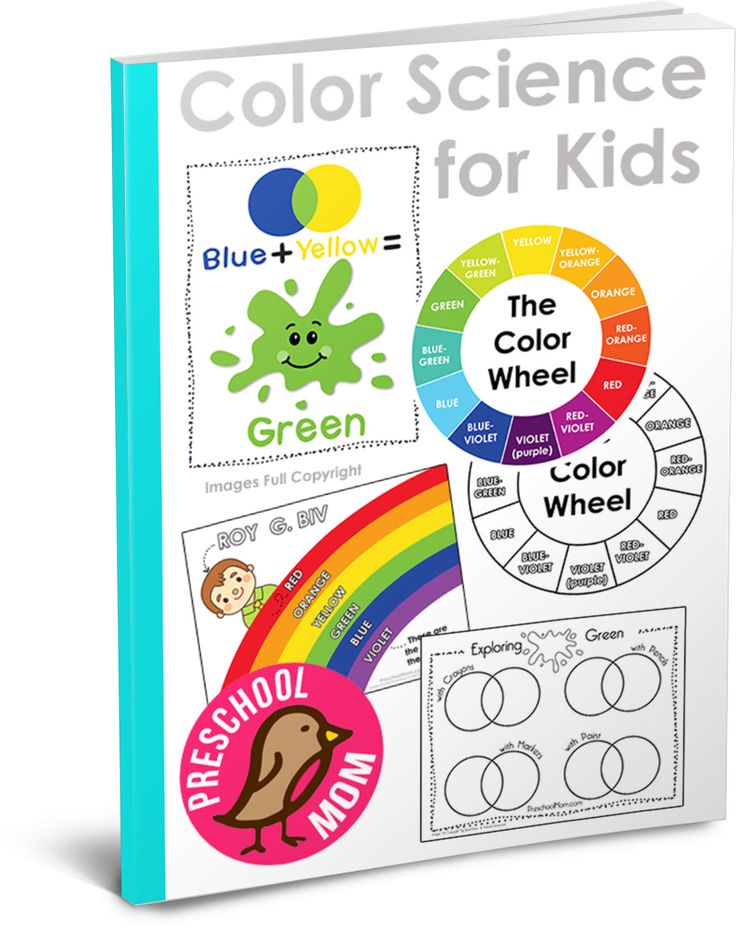
Tips To Keep In Mind
It can be challenging to teach colors to a toddler simply because there are so many contrasting colors constantly around us.
Adding to that challenge is the fact that many different shades of one color exist. For example, there are several reds (think: maroon, crimson, scarlet, etc.), but they are all called “red.” This can be tricky for children learning colors.
Have no fear! We’re here to help. The following are some basic tips to keep in mind as you help your young learner understand colors.
1) Start With The Basics
Think about how we can quickly calculate our change after buying something at a store or spell a new word correctly after hearing it for the first time. This is possible because we understand the basics of math and the English language.
The same approach needs to be applied when teaching colors for kids. It’s best to start with the primary colors (red, blue, and yellow), and once your child gets comfortable with these, move on to other hues.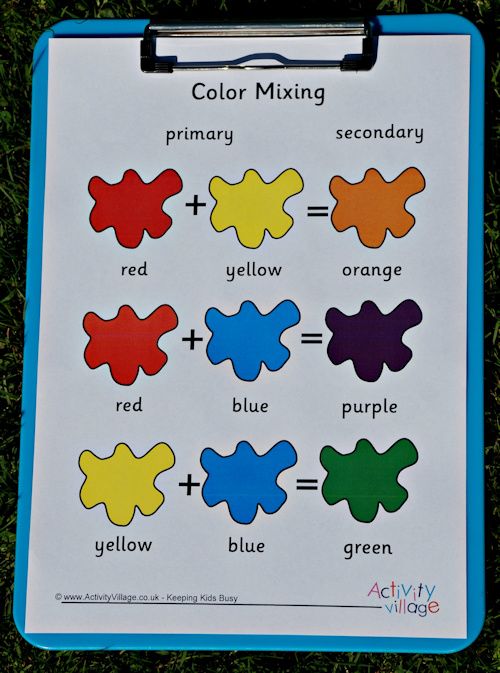
If you’re still in the primary colors stage, what simple efforts can you take to help emphasize these colors in your everyday life?
Here are a few examples:
- When you’re having dinner — “Do you want to use this blue plate?”
- When you’re taking the dog for a walk — “Look at that yellow car.”
- When it’s time to play — Hand them only red, blue, and yellow objects. If they have building blocks, ask them to sort only the red, blue, and yellow blocks.
Once your child is familiar with their primary colors, you can move on to other basic colors, such as green, orange, purple, black, white, brown, and gray.
A great way to help children learn about colors is by interacting with them. We love this sensory game that lets kids practice naming colors and discover what happens when you combine them.
2) Choose Contrasting Colors For Kids
As we mentioned earlier, there are so many different colors in this world that sometimes children can find it challenging to tell them apart. It’s even more difficult when the colors are similar (e.g., red, maroon, orange, etc.).
It’s even more difficult when the colors are similar (e.g., red, maroon, orange, etc.).
For this reason, it’s best to first focus on the hues that are clearly distinguishable before introducing similar colors.
3) Help Them See Color Categories
Once you’re confident that your child knows their basic colors, you can start introducing similar colors (olive green, forest green, etc.). Most of these can be found in the world around you.
As explained, similar shades can be challenging to learn, so in the beginning, the focus shouldn’t be on having them learn all the different terms but, rather, exposing them to the idea of categories.
To help your child recognize the differences between shades, point out an object and name its color. Then, ask them to find other things that are the same color. For example, you could say, “This is a blue sock. Can you find me anything else that’s blue?”
When they find another blue object, talk about what you notice. For example, is the blue the same on both things, or are there differences? Is one lighter or darker than the other? Do either look like a brighter blue?
These simple conversations can help your child as they begin expanding their definition of the color blue.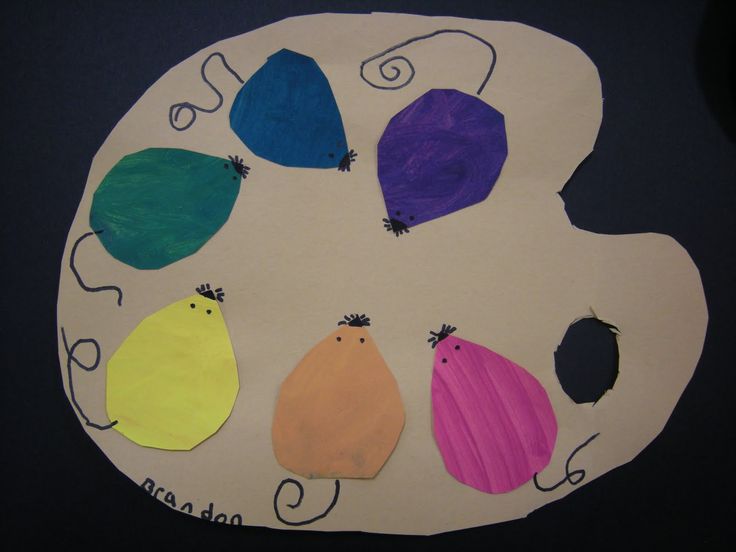
4) Point Out The Connection Between Colors And Feelings
In English, colors aren’t only used to describe how something looks. We also use color terms to express our emotions.
For example, when we say somebody is “feeling blue,” they’re sad. Similarly, if someone is “seeing red,” they’re angry.
While you don’t need to detail the emotions associated with each color at this age, you can make your child aware that feelings and colors are connected.
They can start to use colors to express themselves, a skill that helps them better understand their emotions. This ability is one of the social-emotional topics your child can practice with the Learn with Sesame Street app, powered by HOMER.
10 Simple Activities To Teach Colors For Kids
Learning about colors can be a wonderful part of playtime with your child. To help your child practice their colors, use these engaging activities.
1) Colorful Necklace
Children are often curious and enjoy exploring different colors and materials. This means that when teaching them about colors, the more engaging the activity the better — like using colorful beads to create necklaces.
This means that when teaching them about colors, the more engaging the activity the better — like using colorful beads to create necklaces.
What You’ll Need:
- Colorful beads (in primary colors)
- Yarn or necklace string
What To Do:
After teaching your child the primary colors, try creating a red, blue, and yellow necklace. Tie a knot on one end of the string. Then, show your child how to string beads onto it.
This necklace can be in a pattern or not. It’s really up to you!
When creating the necklace, remember to name the colors you use and encourage your young learner to repeat them.
Note: While working with small items, it’s essential to use safe and non-toxic materials and keep an eye on your young child at all times.
2) Finger Painting
Engaging your child’s senses is one of the most effective ways to help them learn new concepts. That’s what makes finger painting so great for teaching colors!
What You’ll Need:
- Finger paint (in primary colors)
- Finger paint paper
- Newspaper
What To Do
Put a few pieces of newspaper on your table to protect it from spills. Then, place your child’s finger painting paper on top.
Then, place your child’s finger painting paper on top.
Let them go to town using their fingers to create beautiful, colorful pictures. You can use the three primary colors in finger painting and mix them up to form secondary colors (purple, green, and orange).
During the activity, speak about the colors your child is using and the colors that are formed while mixing.
Once the painting is complete, let them tell you about what they created. Encourage them to use color words while they’re describing the artwork.
3) Same Objects, Different Colors
As you teach your child different colors, they may begin associating certain colors with specific objects. For example, if you show your child a red apple, they may associate the shape of the apple with red.
It’s essential to show your child another color apple (e.g. a green one) so they understand that you’re referring to the color of the object, not the object itself. This activity helps you do just that.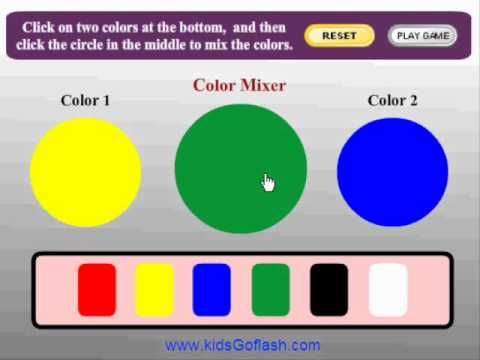
What You’ll Need:
- Two or more objects that are the same except for their color (such as apples, blocks, crayons, etc.)
What To Do:
Hand your child one of the objects and ask, “What color is this?” Once they answer, you can ask, “Are all (objects) this color?”
This will help them start thinking about colors in the world around them. If they aren’t sure, hand them the other object and ask them what it is. Reinforce that it’s the same type of thing as the first one, but it’s in a different color.
To help them further understand, sorting activities can be effective. For example, ask your child to sort the different colors of the same object (e.g., multi-color blocks).
As they get older, you can also encourage them to sort by the object, regardless of color. This will help your child continue developing skills of categorizing.
4) Read About Colors
There are lots of amazing children’s books that speak about colors. While reading to your child, be sure to point out all the colors in the book.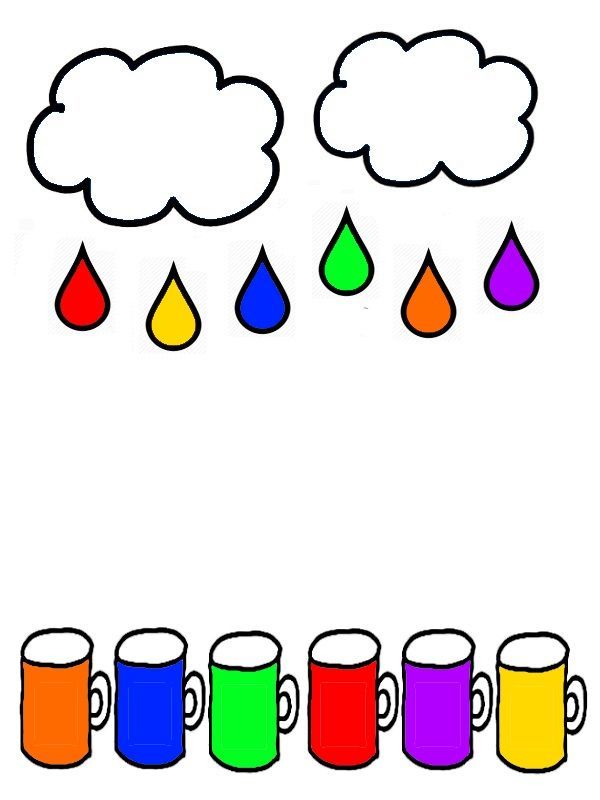
What You’ll Need:
- Books about colors (use your favorite or see our recommendations below)
What To Do:
Grab a book about colors and read it aloud to your child. As you go through each page, talk about the colors you see. Then, you can ask your child to point to things that are different colors. For instance, you can say, “Do you see anything orange on this page?”
This teaches your child to scan the entire picture and focus on the details. As they look for one specific color, they’re practicing their visual discrimination skills, which they’ll use throughout their lives.
Here is a list of some incredible books that will help bring fun and entertainment into learning about colors:
- Brown Bear, Brown Bear, What Do You See?
- A Color of His Own
- The Day the Crayons Quit
- Baby, See the Colors!
- What Makes a Rainbow?
However, don’t feel limited to reading only books about colors.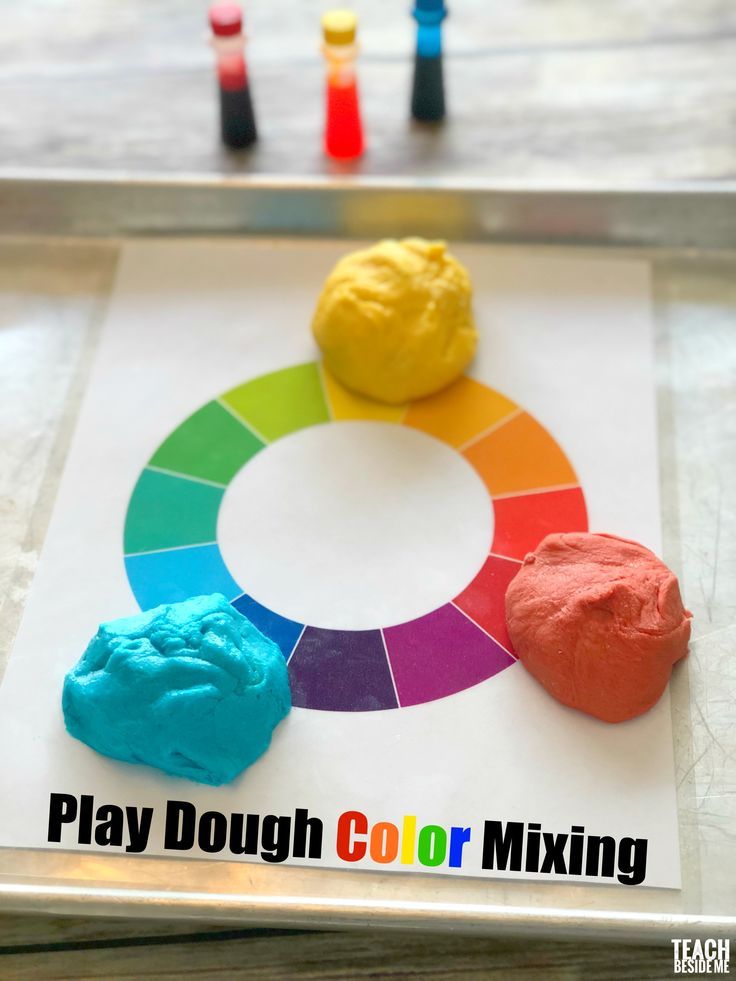 You can talk about the different hues on the pages of any picture book.
You can talk about the different hues on the pages of any picture book.
5) Create A Color Mixing Sensory Activity
When your child uses their senses while they’re learning, they create stronger neural connections, and this helps them better remember the information.
This activity also gives your child a chance to explore colors creatively. It allows them to experiment and see what happens when combining two colors.
What You’ll Need:
- Icing or shaving cream
- Food coloring
- Two small bows
- Toothpick or spatula
- Large zip-top bag and tape, or cookie sheet (The cookie sheet option is more tactile. However, you can opt for the bag if you’re looking for low-mess.)
What To Do:
Start by filling your zip-top bag with icing or shaving cream. Next, choose two colors of food coloring and add each color into the bag. Tape it down to a working surface. Your child will then need to mix the colors with their little fingers.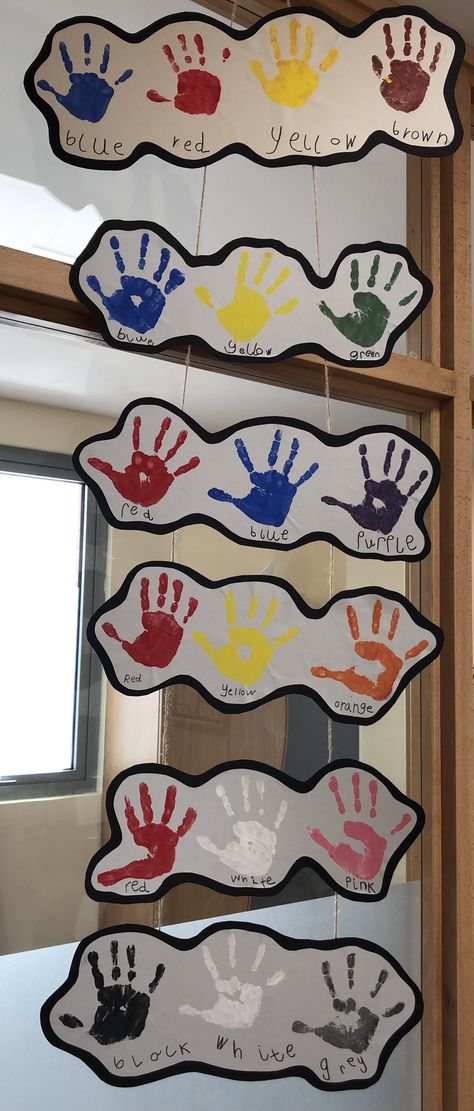
Grab the two small bowls and put icing or shaving cream into them. Add one to three drops of color into the bowl and fold the color into the icing or cream.
You can then scoop the colored icing or cream into the bag or onto the cookie sheet and let your child mix the colors.
This is a fun activity to help children learn that colors are not necessarily stagnant, and mixing them will help produce a different color.
See more details here!
6) Sing Color Songs
Kids love to sing along to fun songs. You can take advantage of this natural love for singing to help your child learn about colors. And the best part is that these silly songs are usually pretty catchy, so your child will likely sing them long after the activity ends.
What You’ll Need:
- A way to play a song for your child to listen to (such as your phone or a computer)
What To Do:
Play a song for your child and start singing the lyrics. Then, repeat it a couple of times to help them learn how it goes.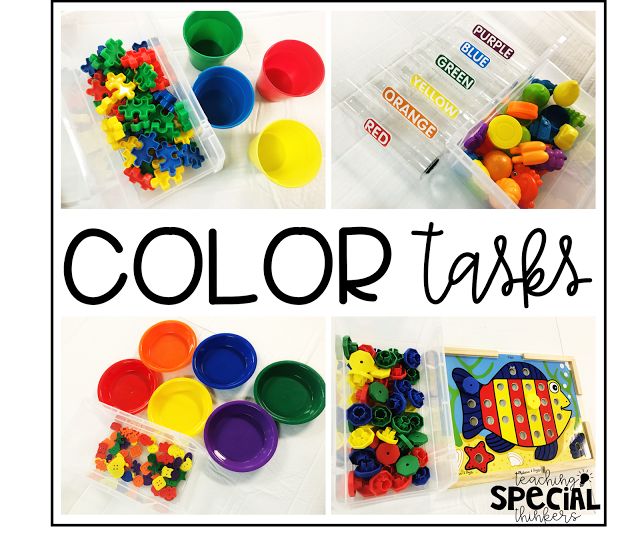
Once they know the words, you can sing the song anywhere to review colors for kids on the go.
Not sure where to start? Check out our fun activity here that helps teach children pantone colors.
You can also sing some of our favorite songs:
- “It’s Not Easy Being Green” by Kermit the Frog
- “The Color Song” by Bryant Oden
- “Colors of Our Clothes” by David Burba and Lisa Campbell
- “Colors All Around” by Jack Hartmann
- “Jenny Jenkins” by Lisa Loeb
- PANTONE Colors: The Song
You can find these songs on YouTube, or search our Learn & Grow app. Happy singing!
7) I Spy Colors For Kids
This classic game is perfect for teaching colors to kids. Since it doesn’t require any materials, you can play it anywhere.
What You’ll Need:
- Nothing!
What To Do:
Look around you at all the different colors. Then, secretly pick out one object that only has one main color. Tell your child, “I spy something (insert color here).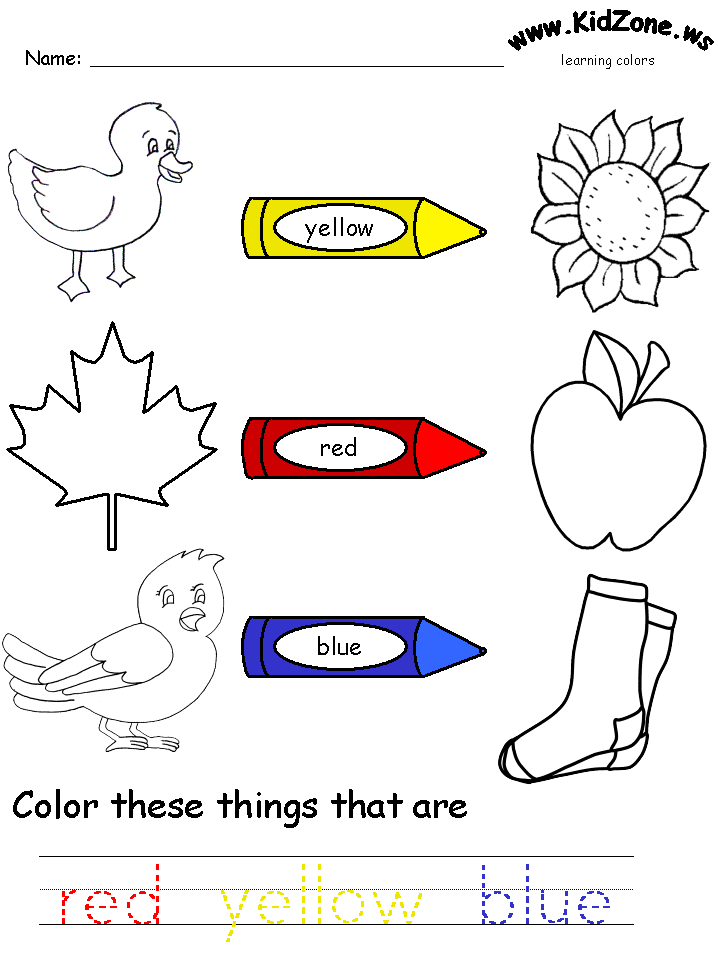 ”
”
For example, you might say, “I spy something blue,” if you’re looking at a blue shirt. If your child correctly guesses the object, then it’s their turn to pick the next thing and give a clue about its color.
8) Tell A Colorful Story
Encourage your child to use the magnets from the HOMER Explore Letters Kit creatively. Have them use the pieces to tell a story and remind them to add some color words to their telling.
What You’ll Need:
- Explore Letters Kit from HOMER
What To Do:
Set up the magnetic story box so it’s ready to go. Go through the magnets and pick out a few that you could use to tell a fun story.
Using the pieces and the magnet backdrop, tell your child a story. As you speak, remember to weave some color words into the tale. For instance, you might say, “The bright pink flamingo decided he wanted to play ball with the brown monkey.”
You’re modeling the activity for your child as you tell a story. When you finish, let them tell a story of their own.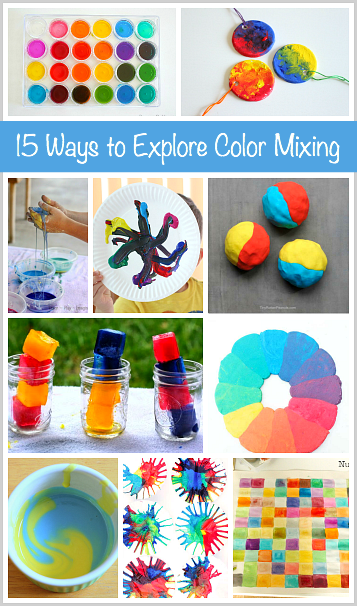 You might notice they simply copy your story at first, and that’s okay.
You might notice they simply copy your story at first, and that’s okay.
Keep playing, and it won’t take long before your child can tell a story all their own.
9) Make A Picture
This activity is perfect for a rainy day. It’s a fun way for creative kids to practice making something with colorful paper strips.
What You’ll Need:
- Construction paper in all sorts of colors
- Scissors
- Glue or tape
- A white sheet of paper
What To Do:
If your child knows scissor safety skills, have them cut the construction paper into strips of different colors. (Otherwise, you cut them.) The strips can all be the same width, or you can mix them up.
Once you have a nice pile of colorful strips, invite your child to glue or tape them onto the white sheet of paper to create a design of their choice. When they are done, talk to them about their colorful picture and have them tell you all about what they created.
Mix things up the next time you do this activity by using circles, squares, or various shapes at once instead of strips.
10) Design A Color Scavenger Hunt
This activity is perfect for kids who love to move around. It’s also a great way to review all the different colors they’ve learned.
What You’ll Need:
- A sheet of blank paper
- Colored pencils or crayons
- A pencil or pen
- A basket or bag
What To Do:
Create a scavenger hunt for your child by drawing boxes on a blank sheet of paper with colored pencils or crayons. Fill in each box with the color it represents to make it easy for your child to identify it.
Quickly review the colors with your child. Point to each box on the sheet and have them tell you the color.
Then, challenge them to find an object around the house for each color. Once they find something, have them put it into the basket or bag. Next, show them how to use the pencil or pen to put an X or a check through the color box they found.
Have them continue searching for items until they have a basket or bag full of colorful objects. Take time to have them tell you the color of each thing they found.
Take time to have them tell you the color of each thing they found.
Make Every Day A Colorful Day
Colors are all around us, and your child has most likely already noticed these different hues without tagging them with color names. However, colors for kids are an important part of childhood development and math prep.
This is where you come in. Armed with the activities above, you can help make learning about colors fun and exciting.
When teaching colors for kids, remember to start with the primary hues and then gradually introduce more. With patience, your young learner will soon recognize all the colors of the rainbow — and so many more!
For more fun learning activities, check out the Learn & Grow app, powered by HOMER.
Author
7 easy crafts to teach primary colors for kids
These crafts and activities are a great introduction to primary colors for kids. Use these ideas to teach about red, yellow, and blue to your preschoolers or kindergarteners.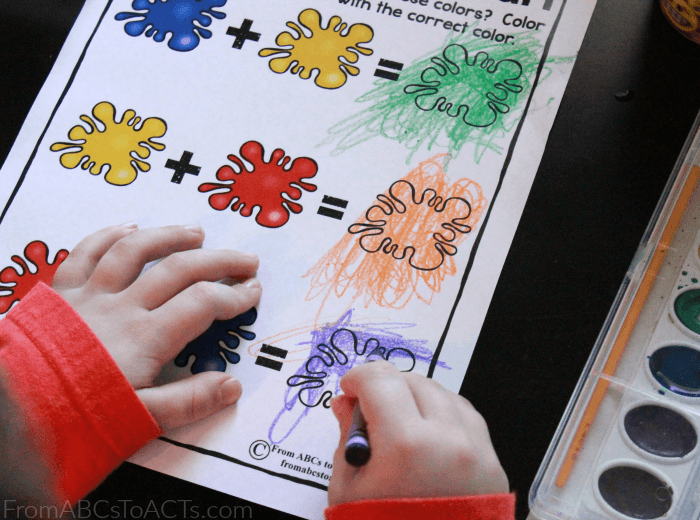 They are great for the classroom or for at home.
They are great for the classroom or for at home.
Primary Colors for Kids
These crafts and activities promote the learning of primary colors for kids. As they are learning new colors, they will need to learn the difference between the primary colors (red, yellow, and blue) and the secondary colors (orange, green, and purple).
Using crafts helps promote the learning of different colors. As they continue to learn, you can start to teach about the color wheel and identifying complementary colors.
But for now, kids really just need to learn about the colors of the rainbow. These color activities are perfect for learning about the concept of colors. Next, you can teach about color mixing and basic color theory.
When you’re creating your primary colors lesson plan, include one of these easy crafts for kids.
Create one during a primary color class party.
Or, if you’re at home, create them at your kitchen table and have your child point out other items around your home that are red, blue, or yellow.
Use them to decorate your playroom or hang them on a bulletin board to show off what your kids have learned.
For added fun, grab one of our primary color worksheets!
Disclosure: Some of the links in this post are “affiliate links.” This means if you click on the link and purchase an item, we may receive an affiliate commission.
Our Favorite Craft Supplies For Kids
These craft supplies are perfect for crafting with young kids. While not each of them is used in the crafts below, they are all staples in our craft bin. If you don’t have any on hand, that might be ok. Take a look at the craft first to see whether or not you need them.
- Construction Paper – One of our favorite craft supplies. These crafts are a great way to use up that stash of black paper.
- Cardboard – Perfect for using up all those boxes you get in the mail!
- Craft Sticks or popsicle sticks – A classic staple, use them in your craft or to mix paint.
- Kid-Friendly paint – Kids love to get messy! Check out our favorite tips for painting with young children.
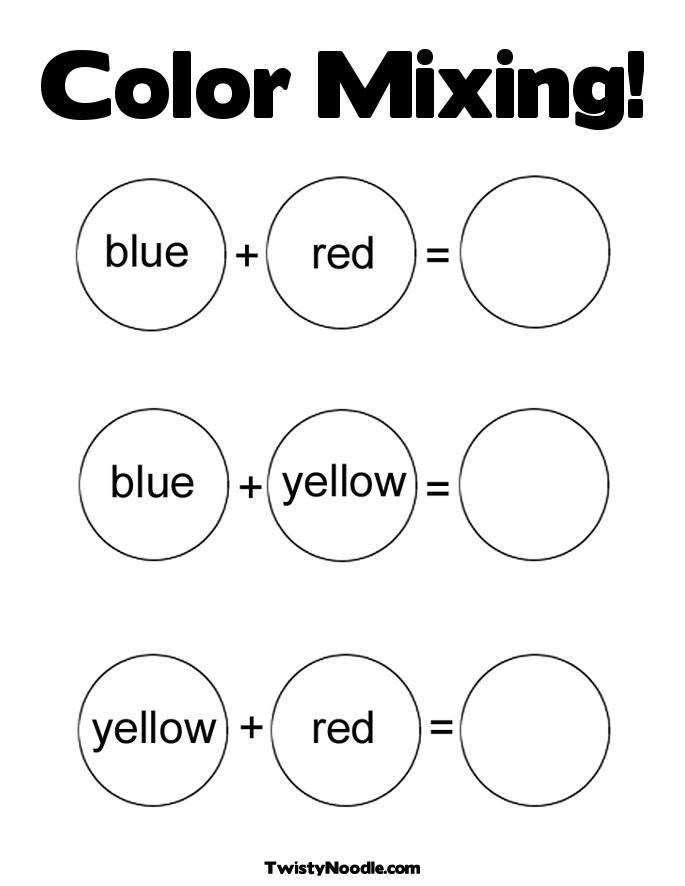
- Googly Eyes – You can literally add them to any project and it instantly becomes cuter.
- Tissue Paper – We always have this on hand. Buy it new or use or save it from birthday parties and holidays.
- Toilet Paper/Paper Towel Rolls – A great way to recycle your paper tubes is to use them in crafts!
- Paper Plate – Grab this party supply to create fun crafts.
- Contact Paper – We use this a lot to create suncatcher crafts
Pin this collection of primary colored activities
Are you still brainstorming your lesson plan? No worries, just pin this to your favorite craft board so you can find it easily.
Inspire creativity
Are you trying to inspire creativity in your kids? Sign up for the weekly Twitchetts newsletter to get that and more. Get access to free printables, special offers, and weekly crafts and activities that kids will love!
Join Here!
More educational crafts!
- Fine Motor Skills
- Shapes
Please share these crafts that teach about colors.

This site wouldn’t be here without shares from people like you, and we are so thankful that you took the time to visit Twitchetts.
Know a friend who is looking for primary color crafts for kids? Please share it on Facebook or save it to your favorite board on Pinterest.
Tags Primary ColorsMDOU "Kindergarten No. 85" of the city of Yaroslavl
Color World
Dear parents!
Developing the creative abilities of your children, we introduce preschoolers to the color . Color is mastered by children early and occupies a special place in a number of expressive means.
The development of color as a means of expression has its own dynamics: from monochromaticity through multicolor to strict color relationships and the assimilation of the laws of color combinations.
Sensor color standards are chromatic colors - red, green, blue, violet (rainbow spectrum) and achromatic colors - white, gray, black, as well as shades of all colors by lightness and saturation.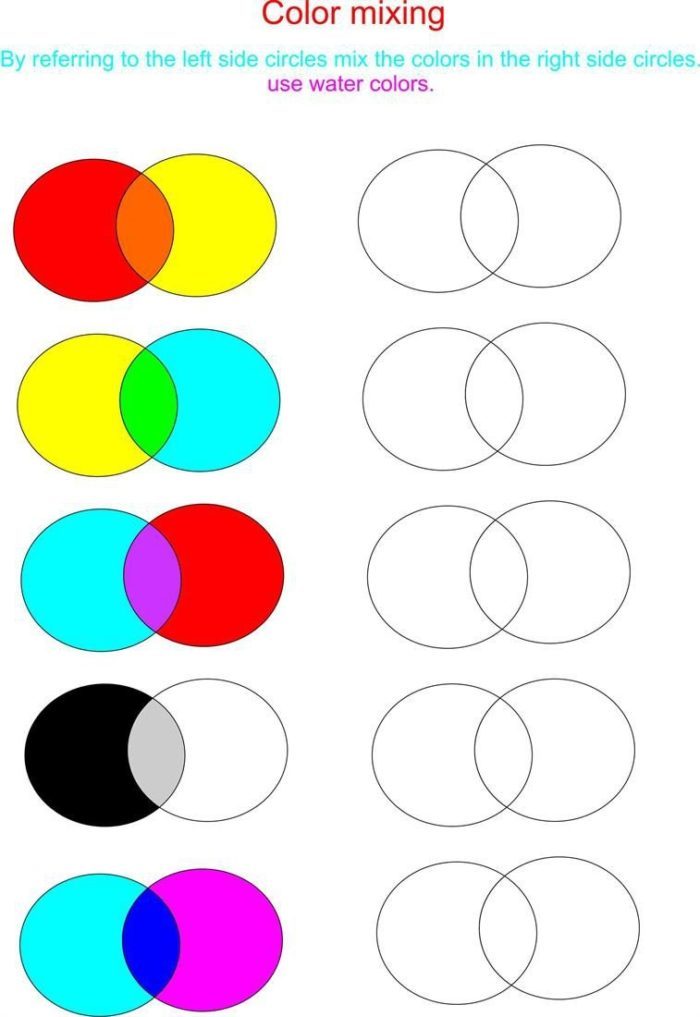
From an early age, the child knows three basic colors (red, blue, yellow) - these are
primary (or primary) colors from which all others are obtained by mixing. These three colors cannot be obtained by mixing any of the others.
From the second younger group, children begin to mix colors and receive secondary (additional or mixed) colors. These are the colors that can be obtained by mixing a pair of primary colors (yellow and blue make green, red and yellow make orange, blue and red make purple).
There are tertiary (derivative) colors that are obtained by mixing (combining) primary and secondary (for example, yellow and green give us yellow-green).
Mixing two colors that are not in a row in the spectrum gives an intermediate color between them, and mixing two neighboring colors gives a shade (for example, red-orange).
In nature and works of art, colors are found in complex and varied combinations.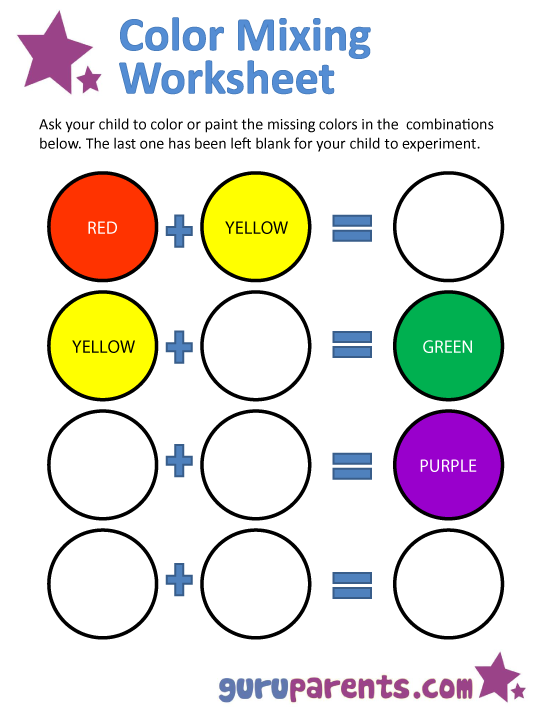
Chromatic colors are divided into two groups - warm (from red to yellow) and cool (from green to purple) tones.
Each chromatic color or hue has a specific lightness, brightness and saturation.
The brightness of the color allows us to distinguish one color from another and give it a name.
Lightness is the degree of proximity of a given color (or shade) to white, and
saturation - the degree of its purity, that is, impurities to a given gray color of the same lightness.
In everyday life, when they denote shades of color, they usually indicate their lightness (dark green, light yellow), meaning brightness. Therefore, it is quite enough if children learn the variability of color tones in terms of lightness and the corresponding names of shades.
Some light shades have special names in everyday life (light red is called pink).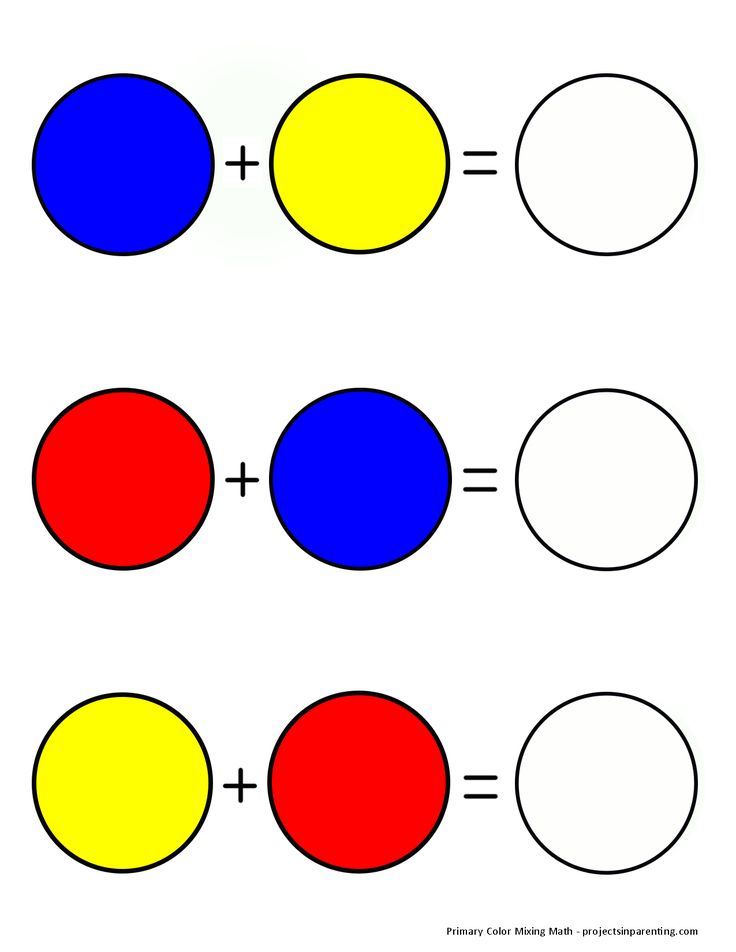 It is quite acceptable for children to use the names of these shades (except for the incorrect name of light blue as blue). This refers to the naming of shades by hue (i.e., those occupying an intermediate position between neighboring colors of the spectrum). Almost all of them have “objectified” names in everyday life (lemon, lilac, raspberry, etc.)
It is quite acceptable for children to use the names of these shades (except for the incorrect name of light blue as blue). This refers to the naming of shades by hue (i.e., those occupying an intermediate position between neighboring colors of the spectrum). Almost all of them have “objectified” names in everyday life (lemon, lilac, raspberry, etc.)
Looking at pictures with a child, we rarely see individual colors, because the overall impression that a picture creates does not depend on each color separately, but on combination and interaction with other colors. Some colors are so dependent on each other that they are called complementary.
Referring to the color wheel, you can immediately determine which colors are complementary.
It's very simple: the complementary colors on the circle are opposite each other.
Red is the complementary color to green, yellow to purple, and blue to orange.
How Primary and Mixed Colors Become Complementary.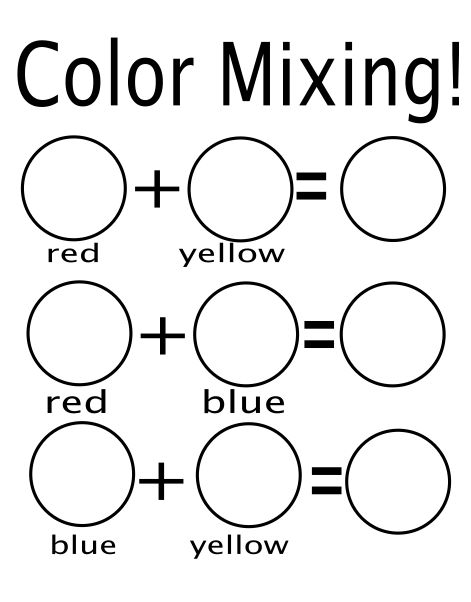
The relationship between primary and mixed colors is illustrated by the double color wheel. Primary colors are in the inner circle, mixed colors are in the outer circle. Complementary colors are opposite each other. The complementary color in relation to one of the main ones is a mixed color, the latter is based on two main ones.
Complementary for a mixed color is the main color that is not included in its composition. Thus, the mixed orange color, being a mixture of red and yellow, acts as a complementary color for the third primary color, which is not involved in its creation - blue.
By the age of seven, preschoolers can convey their emotional state and attitude to the depicted through a color image.
What are colors for?
Colors are given for the greater joy of life, which is created by excitement and harmony.
Yellow - warm, affectionate, kind, cheerful.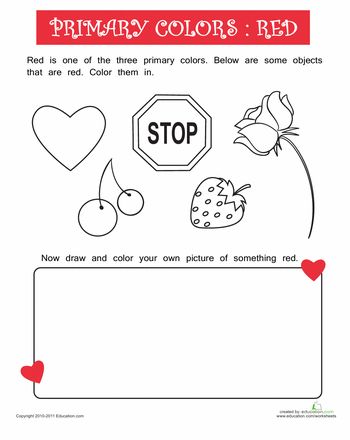
Blue - high, cool.
Green - cool, cozy, calm.
Blue - deep, watery, cool.
Purple - delicious, cold, odorous, sad.
Material prepared
teacher Paskhin L.L
09/12/2013
Learning colors: how to teach a child to distinguish colors and shades
It is generally accepted that by the age of three a child should learn to distinguish between primary colors. This skill is an important part of sensory development, it gives the child the opportunity to see the world in a new way. Often, if the baby does not know or confuse colors, parents have concerns about the pace of development of the child. Do I need to worry if the study of colors is not easy for a child? How to teach a child to distinguish colors? You will find answers to these questions in our article.
At what age does a child begin to see colors?
Studies have shown that children begin to perceive colors by 2-3 months. The first colors a child sees are yellow, orange, red, green. At this age, babies can already react differently to their toys of different colors (for example, a red rattle can please a child more than a blue one), look at bright pictures with enthusiasm. The baby's world quickly acquires colors, but if we talk about the ability to consciously find an object of the right color, then usually it appears in children at the age of one and a half. It is at this age that it is optimal to start learning colors in a playful way. You can voice the names of flowers to a child for up to a year, this will only benefit him. But do not demand too much from the baby, remember that his brain is actively developing, and as soon as the time comes, you will certainly see the results.
To see if your child is ready to learn colors by playing with building blocks, ask your child to point to a part that is the same color as yours.
If the baby can find objects of the same color, then he is quite ready to memorize the names of colors.
Learning colors in everyday life
Children get most of their knowledge about the world in everyday life: communicating with adults and peers, observing nature, playing. The study of flowers is no exception. Sometimes a child does not need to do special exercises to learn to recognize colors. For this, it is enough that he hears the name of the color and associates it with a specific thing. During daily activities, voice for the child what color the objects are around. Whether you are drawing, playing with blocks, looking at cars in the yard, reading, swimming, eating, dressing - in each of these situations, you can gently teach your child to distinguish colors.
It is important that the study of colors does not turn into torture. You should not constantly test the child's knowledge by asking him which color is which.
Soon the baby may just start to ignore you. “Let's paint the sun yellow!”, “What a delicious green cucumber!”, “Oh, where did the blue cube go? Here he is!" are examples of how you can gently help your child remember colors.
Games for learning colors and their shades
In order to get your baby interested in learning colors or to reinforce the knowledge they already have, you can invite your child to play special “color” games.
Color Sorting
Sorting games are designed to help children learn to classify objects into color groups. Any materials at hand can be items for sorting: toys, covers, designer parts, cubes, buttons, cereals, pencils, etc. You can organize the game in various ways:
You can come up with as many options for sorting by color, it all depends on your imagination. So that the child does not lose interest in the task, connect the plot of the game with his favorite characters, toys (for example, a cat will eat from a yellow bowl, and a baby elephant from a red one, etc.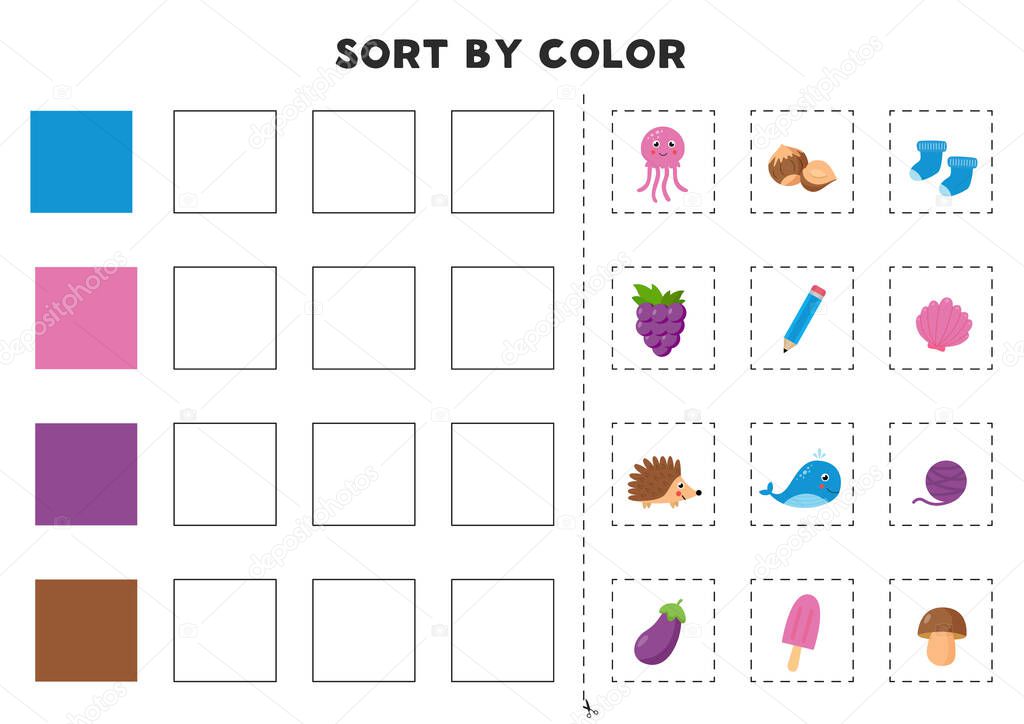 ).
).
Match a Pair
To help your child learn colors, you can use tasks from the Match a Pair series. Ask your child to find a petal for a bug, a pot for a flower, a roof for a house, etc. You can present the baby with a deliberately wrong option and ask to correct the mistakes.
Pick up a patch
Show the child the picture with the missing details. Ask him to fill in the gaps (this can be done with plasticine, pom-poms, caps, cards, etc.).
Color Lotto
At the age of about one year, children begin to be interested in various lottos. In the color lotto, the task is to collect pictures of the same color on the card.
Colored Sensory Boxes
Create a sensory box for your baby where everything is the same color. During the game, the child will be able not only to remember the color that he sees, but also to develop fine motor skills, tactile sensitivity, thinking, and imagination.
Color days
This is one of the most interesting and popular ways to teach your child to distinguish colors.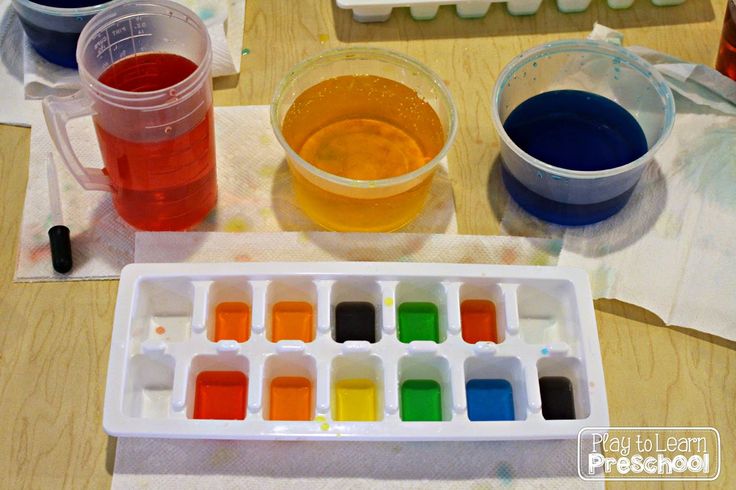 Its essence is that during the day (or several days) you draw the child's attention to objects of a certain color. For example, on a yellow day, you can dress in yellow clothes, play with yellow toys, draw a yellow chicken. Surrounded by one color, the baby will easily remember it.
Its essence is that during the day (or several days) you draw the child's attention to objects of a certain color. For example, on a yellow day, you can dress in yellow clothes, play with yellow toys, draw a yellow chicken. Surrounded by one color, the baby will easily remember it.
Cards for learning colors
You can learn colors with your child using cards. With the help of Doman's "Colors" cards, you can introduce your baby not only to the main colors, but also to different shades. It is important not to overload the child with unnecessary information about the names of 10 shades of green or red. Learn only those shades whose names you can use in the game and life.
Board games for learning colors
Board games are a great way to learn about colors and consolidate knowledge about them. Currently, the stores offer a wide range of similar games for every taste and budget. Choose a game that suits your child.
Educational cartoons
There are many educational cartoons on the Internet that will help your child learn colors quickly.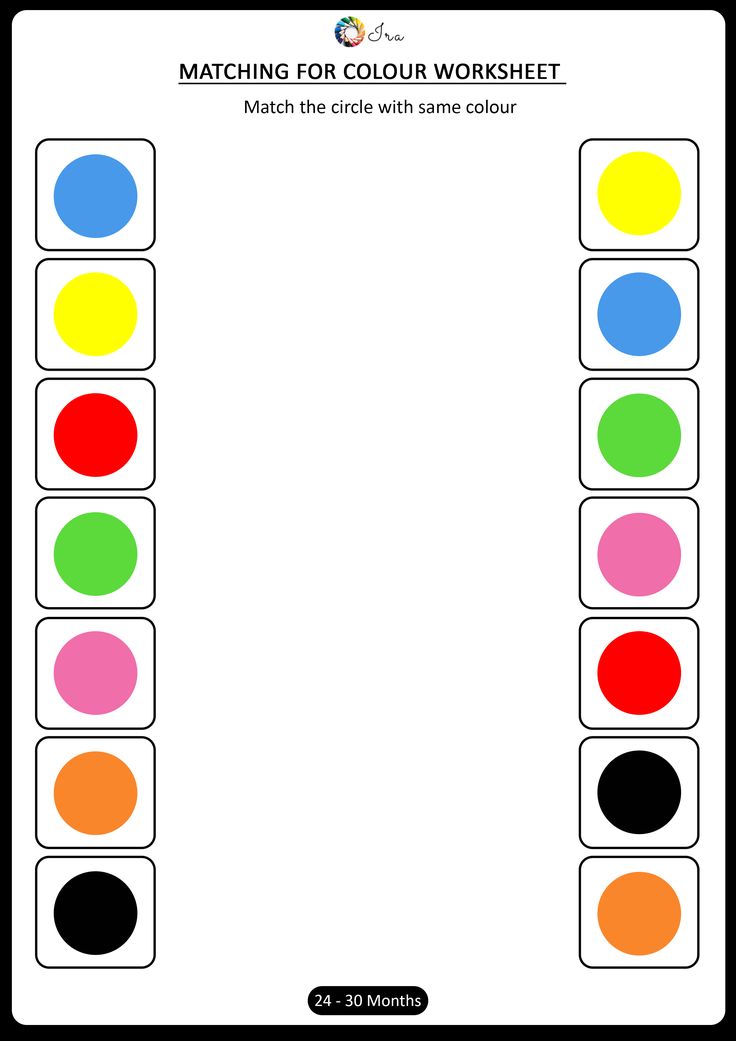 Here is one of them:
Here is one of them:
Educational books
If your little one loves to listen to stories and look at pictures, this is the way for you. We all remember the wonderful story of V.G. Suteev "Rooster and paints", by S.Ya. Marshak has a whole “Colorful book”. You can also find many educational books that will become your faithful assistants.
Conclusions
We have listed for you different color learning games. In order for a child to master the concept of color well, it is worth adhering to a number of principles: do not rush the baby, provide a variety of material for games, discuss what you see.
Conclusion
You can start studying colors from a very early age, the main thing is that it is interesting for the child. It is impossible to specify clear age limits when a child should learn primary colors. This process, like all development, is individual for each baby.

